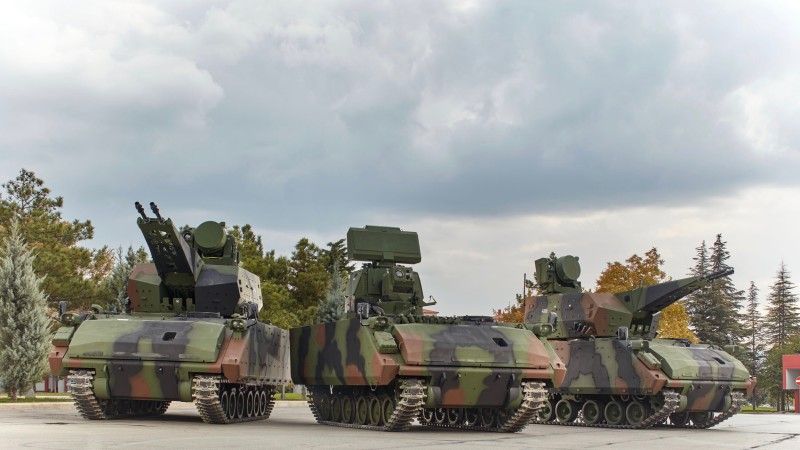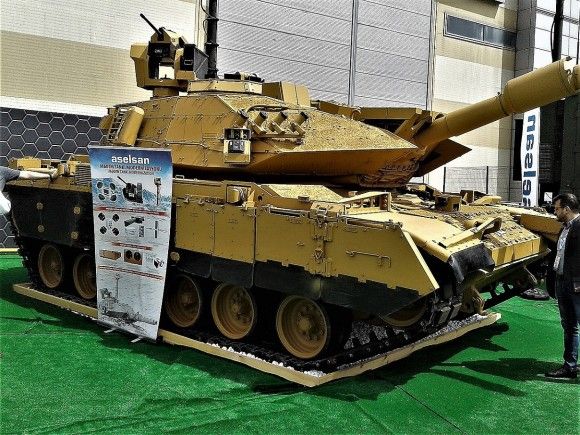Aselsan Expands Defence Offer [INTERVIEW]

On 22-23.10.2024, the editors of Defence24 had the opportunity to visit the SAHA EXPO International Defence & Aerospace Exhibition taking place in Istanbul. During the fair, the editors interviewed the CEO of Aselsan, Mr Ahmet Akyol.
Damian Ratka, Defence24.pl: Good morning Mr President. Aselsan is an internationally recognised, manufacturer of fire control systems for vehicles. Your latest product is the fire control system for the Altay Main Battle tank, if you can tell what its characteristics are?

Photo. Aselsan
Ahmet Akyol, CEO of Aselsan: Hello, I would like to emphasize that ASELSAN, as Türkiye’s largest and leading defence company, values partnerships with European countries. We have made significant progress in technical and technological advancements, and many of our products are actively used in real battlefields—not only by Türkiye but also by other NATO countries. In recent decades, we want to increase our cooperation with countries in Europe such as Poland, Romania, Hungary and our other neighbours. So we are ready to increase our cooperation, especially with the countries of Central and Eastern Europe.

Photo. BMC Defence
We have a number of solutions, the Altay Main Battle Tank is one of the more well-known Turkish programmes, Aselsan supplies electronics and fire control system, so we are able to supply and integrate these types of components into many different vehicles. We can also supply communication systems, observation systems, electronic warfare systems, and self-defence systems including active vehicle defence systems.
One of the advantages that Aselsan has is its experience and ability to deliver and integrate upgrade packages for vehicles from different manufacturers, we have experience with German Leopard tanks (Leopard 1 and Leopard 2), US M-series tanks (M48 and M60) and Russian T-series tanks. Of course, we have the most experience with Leopard tanks and M-series vehicles.

Photo. CeeGee/CC BY-SA 4.0
As far as indigenous solutions are concerned, we have a national Main Battle programme, the fire control system is one of its most important elements, the main idea is to increase the precision of the system during the course of fire and to improve the characteristics of the stabilisation system, especially in difficult conditions, this is how our fire control system Volcan was created, these are the Volcan-1, Volcan-2 systems that can be used in both German and American tanks and, of course, in our new indigenous Altay tank.
We are also ready to upgrade the military equipment used by our allied countries with all types of electronic equipment. I would now like to turn to the subject of self-defence systems.
Exactly, Aselsan is also one of the few manufacturers of active defence systems in the world with its own solution, the Akkor system. We know that the Altay tank will be equipped with this system, but what are its export prospects? Complementing this question, will Akkor be modified for drone protection?
Previously, the main threat we saw was mainly anti-tank guided missiles, but during the war between Ukraine and Russia, a new threat emerged in the form of FPV drones, and now suicide drones are actively used on the battlefield. Aselsan has an answer to these threats, these are the Akkor and PULAT systems. One of the systems is easy to integrate into a vehicle in a short period of time and protects against anti-tank missiles (this is the PULAT system, editor’s note), while the other, Akkor, takes the form of two small turrets installed on the ceiling of a vehicle such as a tank or wheeled armoured personnel carrier, its purpose is to stop an enemy missile at a distance from the protected vehicle.

Photo. BMC Defence
Akkor is also effective against, anti-tank guided missiles that attack in Top Attack mode, but we will soon announce the achievement of new capabilities for the system, which will be able to provide full protection, also against these new threats. These two active defence systems are key technologies for tanks and other armoured vehicles in the new battlefield environment.
Without these protection systems, you cannot send your soldiers into the battlefield because there is a high risk that they will be quickly eliminated by drones and anti-tank guided missiles. So on this issue, in Poland and other allied countries, we are ready to create cooperation with local industry on these solutions and technologies for armoured combat vehicles.
Read more
Aselsan is also the manufacturer of the Korkut air defence system, what are the future prospects for this system, can it be installed on other platforms as well? Moreover, as we see, small drones have become a big threat to ground troops. We see worldwide that more and more countries are working on developing systems to protect ground troops from these new threats. Is Aselsan also working on such solutions in the form of jammers, lasers and kinetic effectors?
Good question, Aselsan and other large defence companies that worked on air defence systems, including the layered one, before the war between Russia and Ukraine, and in the event of other smaller conflicts, including in our region, were seen as the main task to combat aircraft, helicopters and also cruise missiles and ballistic missiles, and these are still serious threats, but the new threat has become drone swarms and kamikaze drones, so you have to find a way to eliminate these threats also in terms of cost-effect.

Photo. Aselsan
And that’s our idea, because thousands of drones can be used on the battlefield, so in that respect, we are proposing both our radio-electronic warfare systems, which is an effective solution for some scenarios, but for other scenarios, you have to eliminate these unmanned systems with so-called Hard Kill systems. And the most effective solution of this type in terms of cost-effectiveness is artillery systems using intelligent munitions.
Our system, the Korkut, consists of 35mm calibre automatic cannons that use this type of intelligent programmable munition, with which both drones and cruise missiles can be countered. So comparing the Korkut system to systems using missiles, it is very effective in terms of cost-effectiveness.
In terms of integration with different platforms, already at Eurosatory in Paris, we presented the Korkut system embedded on a truck, so it can be integrated with different carriers with tracked and wheeled traction. We are also ready to integrate the system into locally manufactured carriers at our customers« sites, and since all the technology is in the turret and in the programmable munitions, and today at the fair we are presenting a new version of the Korkut system.

Photo. Aselsan
It is a Korkut system with a 25mm calibre cannon, so we are creating a Korkut system family that will create a layered air defence adapted to different distances and different battlefield scenarios. It is the best solution in terms of cost-effectiveness against drones, and we have the technologies in terms of munitions, fire control radar, early detection radar, laser rangefinder, optics and fire control system.
So we can work with our partners, on the integration of Korkut systems with different tracked platforms, wheeled platforms and also with naval platforms, and because the threats are very similar also for warships we have developed a naval version of the system, which is called GÖKDENİZ 100/35, which is used by the Turkish Navy and other countries.
Aselsan has also developed the Hisar air defence system, what is the current development of this programme, what direction will it take, and has it already found buyers outside Turkey?
Air defence has to be multilayered, so the Hisar is both a short- and medium-range system. Short-range air defence is the responsibility of the Hisar A, with an effective range of up to 15 km, while medium-range air defence is the responsibility of the Hisar O, which has an effective range of up to 40 km. Hisar systems have been in service with the Turkish Armed Forces since 2021, so we are now in the serial production phase.

Photo. SSB
During SAHA another agreement was signed with the government of Turkey to start the production of more Hisar systems, at the same time we are working on expanding the capabilities, first of all to increase the effective fire range of the Hisar O system, which as I mentioned currently has a range of up to 40 km, this system has reached operational readiness and is in serial production, and I can also say that we are currently in talks with five or six countries for them to purchase the Hisar system as well as our other solutions.
We are also working on a new concept that we have called the Steel Dome, I am a multi-layered air defence and airspace control system, which consists of early warning radar systems, radio warfare systems, as well as air defence systems, and in this domain, the key elements of the Steel Dome are the Hisar A and Hisar O systems.
During the conversation here at the fair, it was mentioned that Aselsan is opening an office in Poland, does this mean that Aselsan is already working with the Polish industry, or is it all still in talks?
Yes, we have already cooperated with Polish companies, and about two or three months ago a large delegation from Poland visited Turkey, and Aselsan was also visited. I can say that the topics discussed were related to radio-electronic warfare systems, unmanned systems and surveillance systems. So it is possible that within weeks or months, there will be information on possible cooperation.
Read more
It should also be remembered that cooperation with Polish industry may consist not only in supplying equipment to the Polish Army, but in the future also to the armed forces of third countries, so our relations with Polish industry and also with the Polish Armed Forces are very active, and perhaps more information on this will appear soon.
Thank you for the interview.
Thank you.





